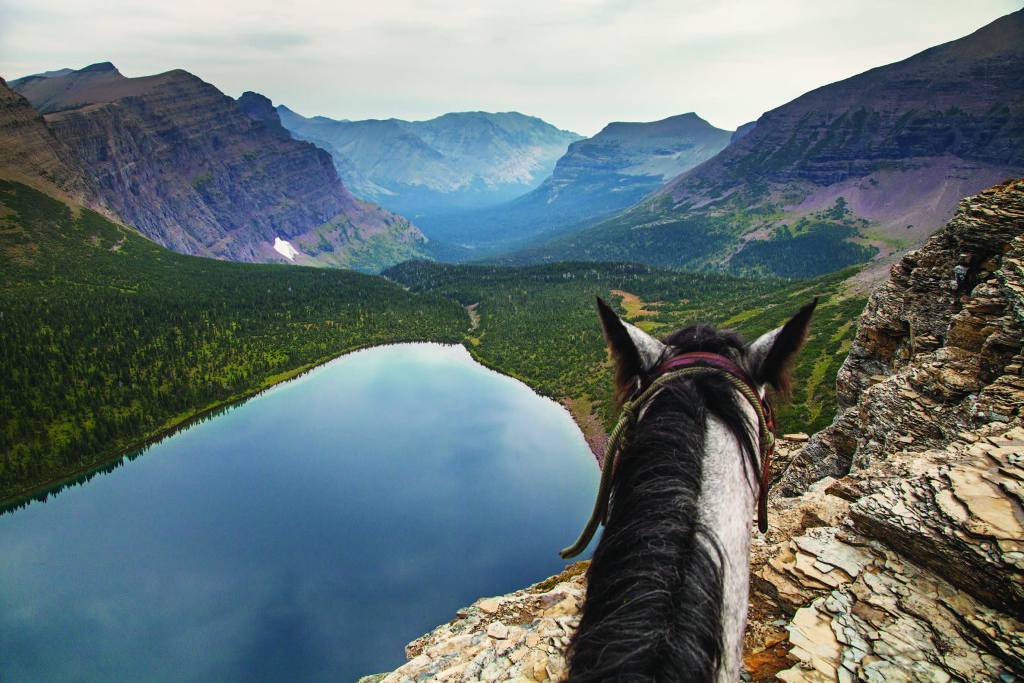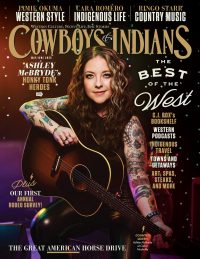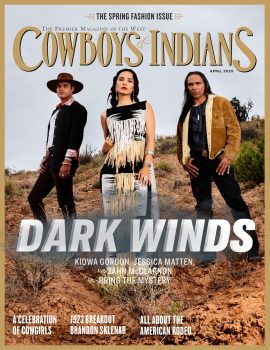
In a new documentary, four men ride 16 mustangs on a 3,000-mile border-to-border trek to advocate for wild horse adoption and conservation.
Documentary filmmaker Ben Masters says the average taxpayer cost to remove a mustang from the range and feed it for the rest of its life is more than he spent to attend Texas A&M University.
However, the U.S. Bureau of Land Management, which is tasked with protecting and managing wild horses and burros, has another option available to prevent overpopulation of wild herds: adoption. This is where Masters’ film Unbranded begins.
In 2010, Masters and a couple of friends decided to ride a string of horses across the state of Colorado and through parts of New Mexico, Wyoming, and Montana. They adopted a few cheap mustangs from the BLM, as they were otherwise unable to afford all the horses they needed for the trek. The descendants of hearty horses that had adapted to the tough open country over hundreds of years, these formerly wild beasts turned out to be the best mounts they had.
As hard as the four-month, 2,000-mile trip was, the fact that it was still possible to take such a long journey on horseback across the West’s backcountry, rarely setting foot (or hoof ) on privately owned land, inspired Masters to take an even longer journey: a 3,000-mile border-to-border trek. And the performance of those unwanted feral horses inspired him to do so with a string of 16 adopted mustangs.
“Growing up in Texas, where it’s all private land, what I found fascinating [during the 2010 ride] is that there are still these massive, wide-open spaces in the West,” he says. “It’s millions and millions of acres, and it’s all public. Anyone can go on it, and the opportunity for adventure is limitless.
“You can go from Mexico to Canada through an almost continuous, roadless, fenceless, open-space wilderness-type area. That is so cool that you can still do that. I just don’t think a lot of people know you can still do something like that in 2015.”
Masters and friends Ben Thamer, Thomas Glover, and Jonny Fitzsimons plotted a course from the Arizona-Mexico border to the Montana-Canada border through undeveloped, wild backcountry — a five-month journey that included injuries to man and horse alike, runaway mustangs, personal conflicts that tested the men’s friendships and resolve, boredom, fear, an inattention to personal hygiene that all but wafts off the screen, and stunning scenery captured by director Phillip Baribeau and a handful of other cameramen working in 10- to 14-day rotations.
The result is a moving documentary with as many unexpected turns as the young men’s journey itself. There are light moments, such as when they ride through the drive-thru of a malt shop and repeated cuts of a stubborn burro digging in its heels to resist being led. It captures heavier emotions as well, such as an old wrangler who is moved to tears when talking about the crew’s journey, wondering if his son, fatally kicked by a horse decades ago at age 4, might have grown up to embark upon a similar adventure. There’s a mishap that leads to some of the horses galloping off, leaving gear strewn for 40 miles before they are finally chased down — which Masters calls the lowest point of the trip. And the film catches some seriously tense moments as the relationship between Fitzsimons and Masters grows more and more contentious.
Masters makes it all the way to Canada, but we’ll let the film’s ending reveal whether the whole group and all of the horses cross the finish line with him.
So how did he feel at the end of the trail?
“It was time to be done,” he says. “Five months is a long time to go on horses without a break. It’s difficult to describe. Obviously it was very exhilarating and a huge accomplishment, but you’ll have to watch the movie to see how it finishes. ... My big satisfaction on finishing was that we made a statement for the horses, and I find that really rewarding.”
Unbranded premiered April 25 at Hot Docs Film Festival in Toronto, Canada. Check www.unbrandedthefilm.com for info about the documentary’s companion book and to find out where and when else you can see the film.
From the July 2015 issue.














